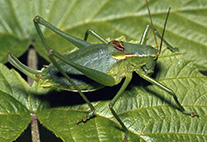Abstract
The genus Caponina Simon, 1891 comprises eleven species of medium-sized, soil-dwelling caponiids. Most members of Caponina have six eyes, but some have five, four, three or two eyes (Brignoli 1977, Platnick 1994). The genus is widespread in South and Central America (Platnick 2012). To date, only three species have been recorded from Brazil: Caponina alegre Platnick, 1994 from the state of Rio Grande do Sul, C. notabilis (Mello-Leitão, 1939) from the states of Paraná and Rio Grande do Sul, and C. tijuca Platnick, 1994 from the state of Rio de Janeiro (Platnick 1994). In this paper we describe a new species from the state of Pará, in Brazilian Amazonia. Caponina papamanga new species was collected during the “Butantan na Amazonia” project, founded by the Instituto Butantan. The phylogenetic relationships of C. papamanga could not be studied, but the greatly elongated embolus, the dorsal tubercle on the palpal femur (Figs. 7, 9) and the massive epigynal sclerotizations (Fig. 10) suggest that this species belongs to the monophyletic Andean group proposed by Platnick (1994: 7).

